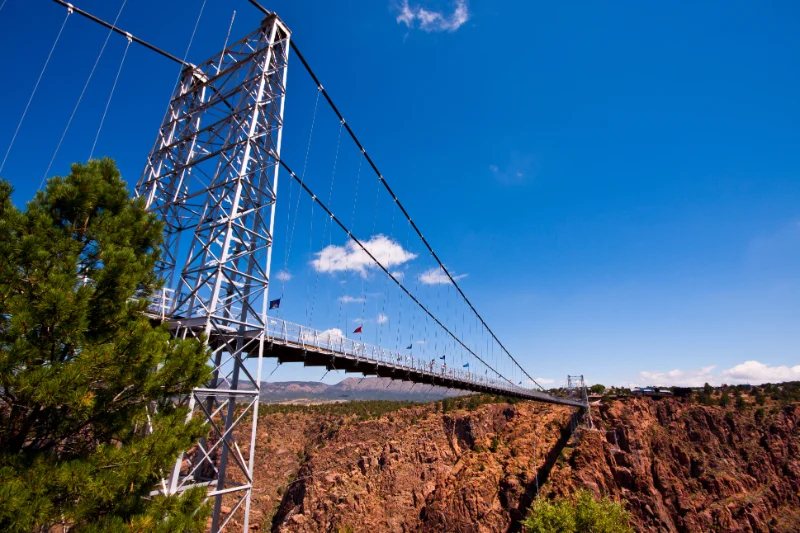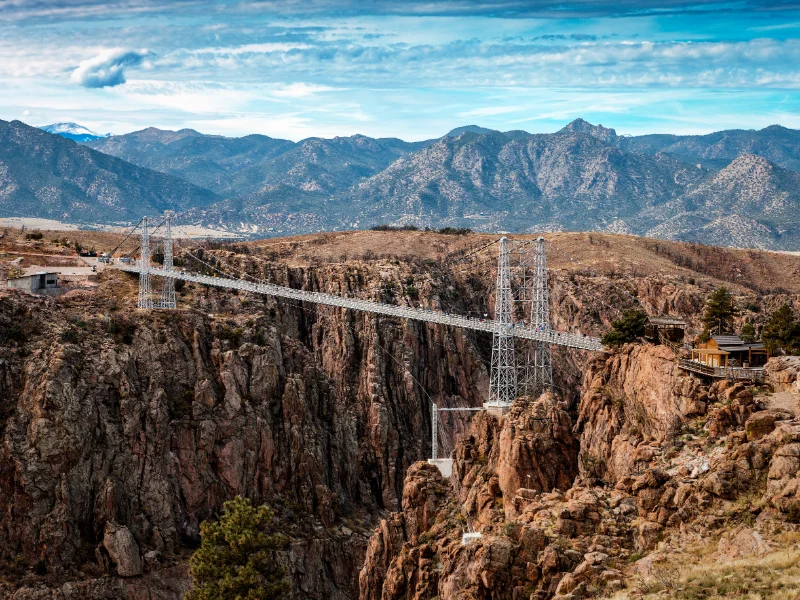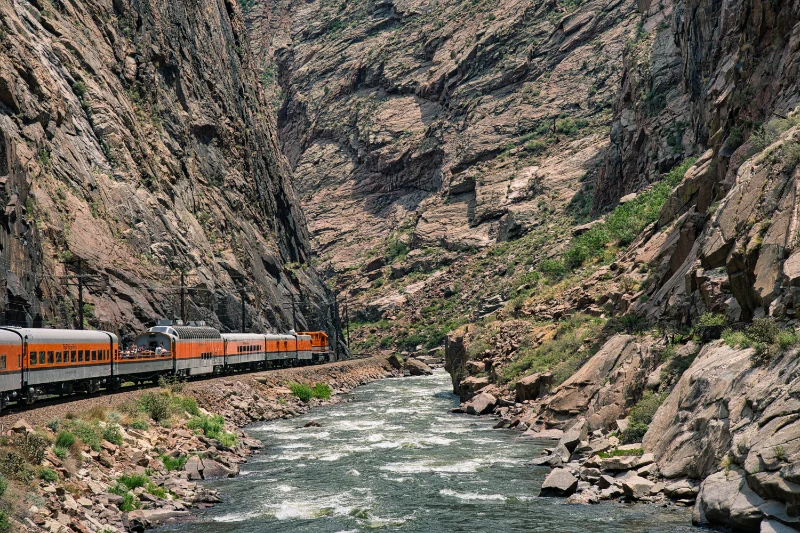Early History
and European Settlement
Before European settlers arrived, Native Americans of the Ute tribe wintered in the Royal Gorge area to enjoy its temperate climate and protection from the harsh winters further west in the mountains. The Comanche, Kiowa, Sioux, and Cheyenne tribes also visited the Royal Gorge area frequently on buffalo hunts and as an access point to mountain meadow regions such as the South Park Basin.
Colorado’s Rocky Mountain region fell under Spanish rule at the time and conquistador expeditions of the 17th century and fur trappers may have been the first other than Native Americans to explore the area. The first recorded instance of European arrival, however, was the Pike Expedition in 1806. Zebulon Pike and his group of explorers built a crude shelter near the Royal Gorge and explored the area thinking they had found the headwaters of the Red River. This first recorded expedition was said to have descended the river into the Royal Gorge on horseback in the winter of 1806.
Nearby Canon City was founded in 1860 to exploit the possibility of mineral deposits such as gold, silver, and lead in Leadville and other area mining camps. This rich discovery of silver and other precious metals prompted a race to build a railway in the area and through the Royal Gorge itself.
The Royal Gorge was a bottleneck and the biggest obstacle faced by the railroaders along the Arkansas River, which was deemed too narrow for both the Atchison, Topeka, and Sante Fe Railway and the Denver and Rio Grande Western Railroad to pass through. There seemed to be no other reasonable access to the South Park area or to make the way to Leadville where the silver mines were booming. Both rail entities took to fighting what has become known as the “Royal Gorge War,” which consisted of two years of essentially low-level warfare between the two companies. The dispute was ultimately settled, but not with gunplay. It was fought out in court. Federal intervention prompted the so-called “Treaty of Boston” to end the fighting between the two competing railroads. The Denver and Rio Grande Western completed the line, yet ultimately leased it for use by the Sante Fe railroad after all.
In the 1890s the Royal Gorge line began passenger service for transcontinental railroad travel. As many as four trains per day went through the Royal Gorge. Over time, the establishment of alternate routes through the mountains west of Denver caused the Royal Gorge Route to fall from favor by travelers, and passenger train service was discontinued in 1967. Today, there is a tourist train providing passenger service in the Royal Gorge. It goes 12 miles upstream from Canon City to Parkdale and back each day. During the tourist season, from Memorial Day to Labor Day, there are up to 3 train rides available each day.
Historic Train Ride
in the Royal Gorge
Another popular attraction in the area is the Royal Gorge Route Railroad. There is a steep history of passenger train service in the Royal Gorge. The first passenger train embarked on May 7th, 1879. In 1882, the Royal Gorge Route of those days became the transcontinental link between Denver, Colorado, and Salt Lake City, Utah.
Traveling through the Royal Gorge was the highlight of the route through the Rocky Mountains. At the narrowest point in the Gorge, only about 30 feet wide, an iron hanging bridge was constructed at a cost of $12,000. The bridge has served the rail line well for over 120 years and continues to do so to this day. In the 1890s, as many as 4 trains a day passed through this incredibly scenic route. The original route between Denver and Salt Lake City crossed over Marshall Pass near Salida and on to Gunnison and Grand Junction, Colorado. With the opening of the Moffat tunnel in 1928, passengers could now choose to go through the Royal Gorge or directly west from Denver to Glenwood Canyon to Grand Junction. With the ability to travel independently via airplanes and automobiles, the Royal Gorge Route lost in the popularity contest and was discontinued.
Now, passenger service has returned to the Royal Gorge with the Royal Gorge Route Railroad tourist train. This train ride goes 12 miles through the Gorge to Parkdale and back—about a 2-hour ride.


